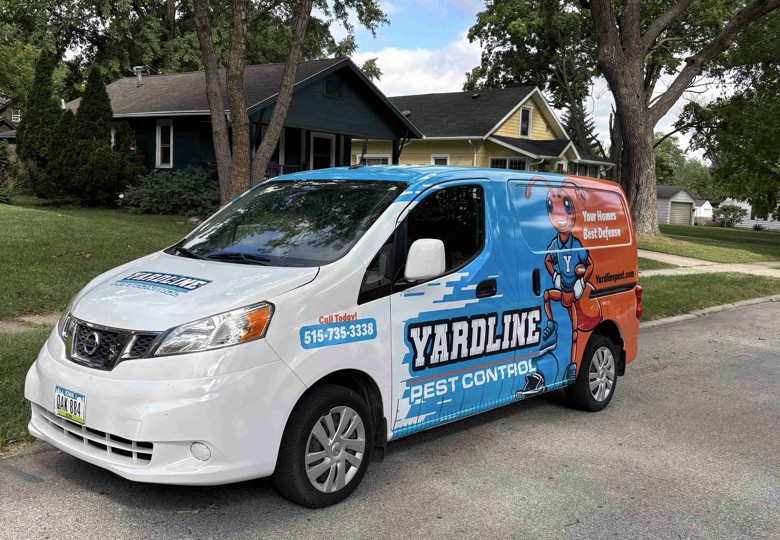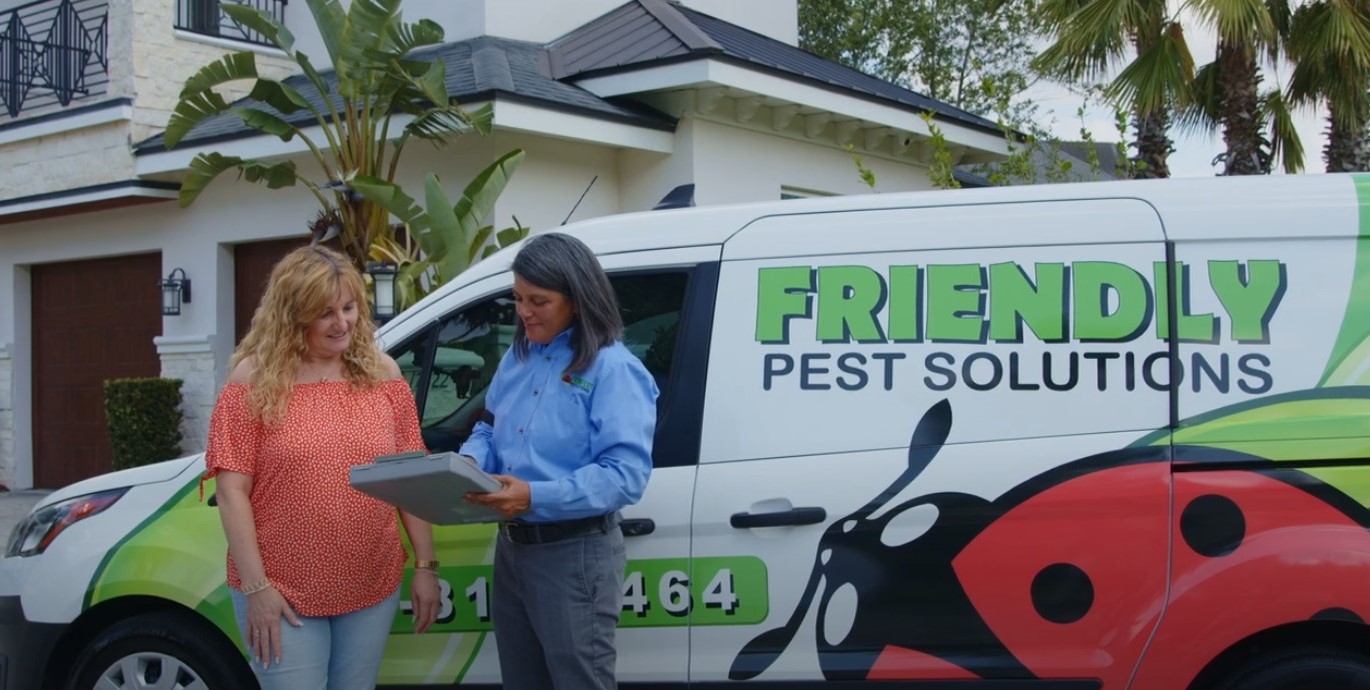The Average Pest Control Business Profit Margin: Full Guide

Creating a price book for your pest control business requires meticulous attention to detail and accurate calculations. This ensures robust profit margins, representing the money earned on products or services after deducting all direct and indirect costs.
Prices should be in line with industry standards and those of your competitors, while also taking into account any seasonal fluctuations. For example, a pest control company must price its services accordingly during the busy summer months to maintain a positive cash flow throughout the slower seasons. This article will discuss:
How to Calculate the Profit Margin for Your Pest Control Business
Learn how to calculate gross, operating, and net profit margins to understand your financial health better and identify opportunities for improvement.
What Is a Good Pest Control Business Profit Margin?
Discover the typical profit margin range in the pest control industry and what factors influence whether your business performs above or below average.
How Much Do Pest Control Businesses Make?
Explore average revenue figures for pest control companies across the U.S., including breakdowns by company size, services offered, and customer base.
How to Improve the Profit Margin for Your Pest Control Business
Get actionable tips to reduce costs, increase pricing power, and boost operational efficiency to strengthen your bottom line.
What Are the Risks Associated with Increasing Profit Margins?
Understand the trade-offs and risks associated with margin expansion, including its impact on customer satisfaction and service quality.
What Licenses Do I Need to Start a Pest Control Business?
Review the certifications, permits, and insurance requirements necessary to operate a pest control business legally in the U.S.
What Equipment Do I Need to Start a Pest Control Business?
Get a checklist of essential tools, vehicles, and technology systems needed to deliver professional pest control services.
Need help establishing pest control prices? Read on for practical tips that help business owners succeed financially in the competitive pest control industry.
How to Calculate the Profit Margin for Your Pest Control Business
To calculate profit margins for your pest control business, follow these steps.
First, determine your direct costs, such as labor, chemicals, and equipment used for each job. Be sure to include any indirect costs, like insurance and vehicle expenses. Remember that additional costs may arise from follow-up visits or re-treatments, which should be factored into your profit margin calculations.
Next, define your unit of service. In pest control, a standard treatment is typically used as the baseline for calculating costs and revenues. This helps ensure consistency when analyzing your margins across different jobs and service types.
Finally, subtract your total costs from your total revenue for each unit of service to find your profit margin.
1. Identify direct costs per unit
Determine the direct costs associated with providing a particular service, such as bed bug control, termite inspection, or insecticide application. This includes labor wages, materials (such as pesticides and baits), and equipment (such as sprayers and protective gear).
To calculate direct costs, tally expenses per service unit, summing up labor, material, and equipment costs for each job. In a pest control business context, a unit of output could be defined as a service rendered per hour, such as an hour of technician labor or fixed costs for a service call. To track and maintain detailed records of all expenses incurred per service rendered, enabling accurate cost-per-unit calculations for precise profit margin assessments.
2. Identify sales revenue per unit
Sales revenue per unit refers to the income generated from each service or unit provided by a pest control company. For example, consider a pest control treatment for a standard-sized property that costs $200. The sales revenue per unit (pest control treatment) is $200.
3. Determine your gross profit
To determine gross profit, subtract direct costs from sales revenue. Say the direct cost of the pest control application is $75 (2 hours at $30 each and $15 in equipment/materials). Take the sales revenue of the treatment ($200) minus the direct cost of $75 for a total gross profit of $125.
4. Calculate your profit margin
To calculate a gross profit margin, divide gross profit by sales revenue, then multiply by 100 to get a percentage. In the example above, with a sales revenue of $200 and direct costs of $75, the gross profit is $125.
Take 125 (gross profit) divided by 200 (revenue), which equals .625. Then, multiply .625 by 100 for a gross profit margin of 62.5%.
The net profit margin represents the percentage of revenue that remains after deducting all expenses, including operating costs, taxes, and interest. Suppose the company incurs additional operating expenses of $50, resulting in a net profit of $75.
To calculate the net profit margin, divide net profit ($75) by gross profit ($200), then multiply by 100 for a percentage. Example: (75/200) x 100 = 37.5%.
What is a Good Pest Control Business Profit Margin?
Determining what constitutes a good profit margin for a pest control service business involves several factors influenced by market dynamics, operational efficiency, and region. Larger companies achieve higher margins due to economies of scale, while smaller firms may average slightly lower margins due to limited resources and higher relative operational costs. Profit margins may continue to fluctuate as the industry evolves and adapts to ongoing trends.
According to FinModelsLab, a leading provider of financial tools and resources for startups and small businesses, the average profit margin for pest control companies in the U.S. ranges from 10 to 20 percent. Industry reports provide detailed analysis of profit margins and market trends, offering valuable insights for business owners.
When businesses are in growth mode, their profit margins may be lower as they reinvest money into the company for hiring, acquiring new customers, and marketing. Additionally, the pest control market in specific geographies may require thinner margins.
A pest control business owner should use industry benchmarks to determine a healthy profit margin for their business. Then, they should measure margins regularly to ensure the company achieves its financial goals and course-corrects if needed.
How Much Do Pest Control Businesses Make?
The pest control industry offers strong revenue potential for both new and established companies.
According to IBISWorld, the U.S. pest control market generated over $24 billion in 2023 and is expected to reach $31.8 billion by 2028. With more than 32,000 pest control businesses in operation, earnings vary widely depending on size, location, and services offered. Revenue can also fluctuate across different seasons, as pest activity and demand for services change throughout the year.
On average, a pest control business earns between $400,000 and $743,000 in annual gross revenue. Smaller owner-operators typically generate between $135,000 and $250,000, while mid-sized companies with a few technicians can earn between $400,000 and $600,000. Larger businesses serving commercial clients or operating across multiple service areas often exceed $1 million in revenue.
Earnings are influenced by factors like recurring revenue from scheduled treatments and service contracts, customer retention, and whether you serve residential or commercial clients.
The prevalence of pest problems in specific regions or times of year can also significantly impact business revenue. Learn more about factors affecting earnings in our complete guide to pest control business margins.
Is a pest control business profitable?
Yes, pest control is widely considered a profitable service business.
It benefits from low startup costs, consistent demand across seasons, and high customer retention due to recurring service plans. Many successful companies generate strong cash flow from repeat visits, including scheduled visits that are essential for maintaining customer relationships and ensuring effective pest control, contract renewals, and upselling related services such as termite or mosquito control.
Offering a service guarantee can further build trust with customers and encourage repeat business by assuring satisfaction and reliability.
Profitability also improves with scalability.
As businesses grow and optimise routes, scheduling, and staff, they reduce overhead costs per job. According to industry benchmarks, the average operating profit margin can range from 20% to 45%, depending on the business's size and efficiency.
However, challenges include rising fuel and labor costs, regulatory requirements, and local market saturation. Still, with clever pricing strategies, excellent customer service, a strong guarantee, and streamlined operations, even small pest control startups can thrive.
What is the average pest control company income?
The average income for a pest control business depends on factors such as company size, location, and the scope of services provided. According to the data above, solo operators typically earn between $135,000 and $250,000 annually in gross revenue, with net income often ranging from $40,000 to $75,000, depending on their operating expenses.
Small teams of 2–5 employees often generate $400,000 to $600,000 per year, while established firms with multiple crews and commercial clients may exceed $1 million in gross revenue. Larger companies can handle more complex or higher-volume pest control contracts, which can significantly boost their earnings. Monthly income for smaller operators can range from $11,000 to $20,000, while larger companies may earn $ 80,000 or more per month.
A company's ability to efficiently manage operations and deliver quality service also directly impacts profitability, as effective management can reduce costs and improve client satisfaction.
Remember, gross income reflects total revenue before expenses.
Net income—or profit—accounts for costs like payroll, vehicles, fuel, licensing, and supplies. Understanding both is vital for assessing financial health.
Want to dive deeper? Read our article on pest control profitability.
How to Improve the Profit Margin for Your Pest Control Business
Improving profit margins requires a systematic process that addresses both reducing costs and increasing revenue.
Now that you know how to calculate your profit margin, you may wonder how to increase it.
When expanding your service offerings, consider how new services can be designed to meet specific customer needs and market demands.
Investing in staff training is crucial—focus on developing experts with specialized knowledge to improve service quality and operational efficiency.
Reduce direct costs
Reducing direct costs proves vital to enhancing profit margins in a pest control business. Effective cost-cutting measures include streamlining inventory management to minimize material waste, negotiating better supplier deals for bulk purchases, and implementing efficient scheduling to optimize technician labor utilization.
Additionally, investing in training to enhance technician expertise can minimize errors and rework, thereby reducing operational expenses.
Increase pricing
While no customer likes a price increase, raising prices is necessary to keep up with market conditions and maintain profitability. First, customer surveys or market research should be conducted to gauge satisfaction and pricing tolerance. It’s also vital to assess competitor pricing strategies while emphasizing the unique value of your services.
Once you’ve determined an appropriate price increase, communicate this change to existing residential and commercial clients before it takes effect. Regularly monitor market shifts to ensure pricing remains competitive and accurately reflects the value delivered.
Utilize technology to improve efficiency
To improve operational efficiency and trim costs, consider investing in a field service app like FieldRoutes. This app is purpose-built to simplify and automate pest control business operations. From drag-and-drop scheduling to real-time routing that reduces fuel costs and technician downtime, FieldRoutes helps streamline your day-to-day workflows.
Its automation capabilities extend to customer communications—such as appointment reminders and service updates—and real-time reporting, enabling smarter and faster business decisions. By reducing manual input and increasing visibility across your operations, FieldRoutes helps boost productivity and protect your bottom line.
Selecting the right technology means understanding your business’s specific challenges. CRM systems tailored to service industries can improve customer satisfaction and loyalty. Look for scalable solutions that can grow with your company and integrate easily with your current systems, ensuring smooth implementation and ongoing efficiency.
Increase the number of services offered
Expanding service offerings in a pest control business presents opportunities for growth and diversification of revenue streams.
By providing services for various types of pests—including both standard and less common household pests—you can attract a broader customer base and ensure year-round protection, which helps diversify your revenue streams. Conduct comprehensive market research and customer surveys to pinpoint additional services in demand within the target market.
Analyze customer feedback, inquire about unmet needs, and assess competitor offerings to identify market gaps and opportunities. Consider complementary services, such as wildlife control, lawn care, or sanitation, and align them with pest control to create a comprehensive solution package that matches your business model.
Increase the quality of services offered
In addition to introducing new services, examine your existing offerings to identify areas for improvement. Consistently delivering high-quality service proves paramount for customer retention, referrals, and business success.
Conduct ongoing staff training to ensure technicians stay updated on the latest techniques and technologies. Implement industry best practices, such as Integrated Pest Management (IPM) methods, to convey your company’s commitment to effective and responsible pest control.
Ask for customer feedback and reviews and respond promptly, remedying any mistakes mentioned in negative reviews. Maintaining a friendly and approachable staff can significantly improve customer satisfaction and retention, as clients appreciate personable and respectful service. Monitoring reviews provides insight into operational changes that can be made to better serve customers.
Develop a comprehensive marketing plan
To reach potential customers and nurture existing customers, you need a comprehensive marketing plan that includes social media, direct mail, email marketing, and SEO. Measure the efforts across each channel to double down on campaigns with higher ROIs and scale back on ones that don’t perform.
What Are the Risks Associated With Increasing Profit Margins?
While higher profits are essential to business growth, they can also come with inherent risks. Increased prices may reduce customer satisfaction if perceived value doesn’t align with the cost. Competitive pricing pressures might emerge, risking market share loss if rivals offer similar services at lower rates.
Cost-cutting measures could diminish service quality, making it challenging to maintain high standards and impacting customer loyalty and reputation.
Moreover, a push for higher margins may strain employee satisfaction due to increased workload or reduced resources, which can affect morale and productivity.
Balancing profit objectives with maintaining service quality and fostering a positive work environment is crucial to mitigating these risks and driving profitability sustainably.
What Licenses Do I Need to Start a Pest Control Business?
Starting a pest control business requires proper licensing and insurance to remain compliant and protect both your business and customers.
While the specific requirements vary by state, most pest control companies must obtain a combination of federal, state, and local permits or approvals before legally offering their services. It is also important to understand regulations related to pest control products, including their selection and safe application, to ensure you are using high-quality, targeted, and environmentally friendly solutions.
A pesticide applicator license is typically required for any pest control business that handles or applies pesticides. This license ensures that you understand how to use pesticides safely and effectively, and that you are aware of the toxicity risks associated with different pest control products. Additionally, a standard business license and proof of general liability insurance are typically required before accepting clients.
Some states may require you to pass exams, submit training records, or complete continuing education. If you’re hiring technicians, they may also need individual certification.
Be sure to review your local regulations, and for more compliance tips, refer to our guide to starting a pest control business.
Here’s what you may need to operate legally:
Pesticide Applicator License: Required in most states for anyone applying pesticides commercially. You may need to pass a written exam and demonstrate practical experience.
Business License: Most states require pest control companies to register as a business entity with the state. You can register with your state’s department as part of your business plan setup.
General Liability Insurance: Protects your company from property damage or bodily injury claims that may arise during service calls.
Workers’ Compensation Insurance is often required when hiring employees. It covers medical expenses and lost wages in case of workplace injuries.
Optional Certifications: Earning credentials such as NPMA membership or GreenPro Certification can enhance credibility and demonstrate a commitment to environmentally responsible pest control, including the use of products with lower toxicity.
Vehicle and Transportation Permits: If you operate marked service vehicles, some states require additional permits or commercial insurance.
Always double-check your state and municipal requirements before launching your pest management services. Staying compliant protects your reputation, builds trust with customers, and helps you avoid costly penalties.
Managing the toxicity of pest control products and adhering to safety and environmental regulations is essential for responsible business operations.
What Equipment Do I Need to Start a Pest Control Business?
Launching a pest control business requires the right tools to deliver practical, safe, and professional service.
Whether you’re a solo operator or building a growing team, having the proper pest control supplies from the start can streamline operations and increase customer satisfaction. At a minimum, every pest control business should invest in reliable application tools, safety gear, and a dependable vehicle.
Choosing the right product for each pest control job is essential—high-quality, innovative, and environmentally friendly products can significantly impact results and customer trust.
For treatment, essential gear includes handheld and backpack sprayers, dusters, bait guns, and foamers. Technicians utilize these tools to address a range of pest issues, applying the selected products to ensure effective and safe pest management. Personal protective equipment (PPE), including gloves, masks, goggles, and respirators, is essential for technician safety and regulatory compliance. A service vehicle is also crucial for transporting gear, chemicals, and team members between jobs.
Don’t overlook the value of software.
A field service solution like FieldRoutes helps automate routing, billing, and scheduling, enabling you to manage jobs efficiently, reduce errors, and enhance customer communication from the outset.
Let’s break down what solo operators and small teams need to get started.
Optimize Your Operations with Pest Control Business Software
Boosting your pest control business profit margin requires more than price adjustments. Relying solely on margin tweaks—without addressing deeper operational inefficiencies—may deliver short-term wins but can threaten long-term growth and stability.
The real path to profitability lies in streamlining your business processes.
That’s where FieldRoutes comes in. This all-in-one pest control business software simplifies day-to-day operations across estimating, scheduling, routing, accounting, and marketing. With real-time insights and automated workflows, it helps eliminate bottlenecks, improve productivity, and safeguard your bottom line.
Whether you're just starting or scaling your operations, FieldRoutes supports your growth at every stage with features specifically designed for pest control companies.
Schedule a free demo to see how FieldRoutes can help you simplify, scale, and grow your pest control business.





